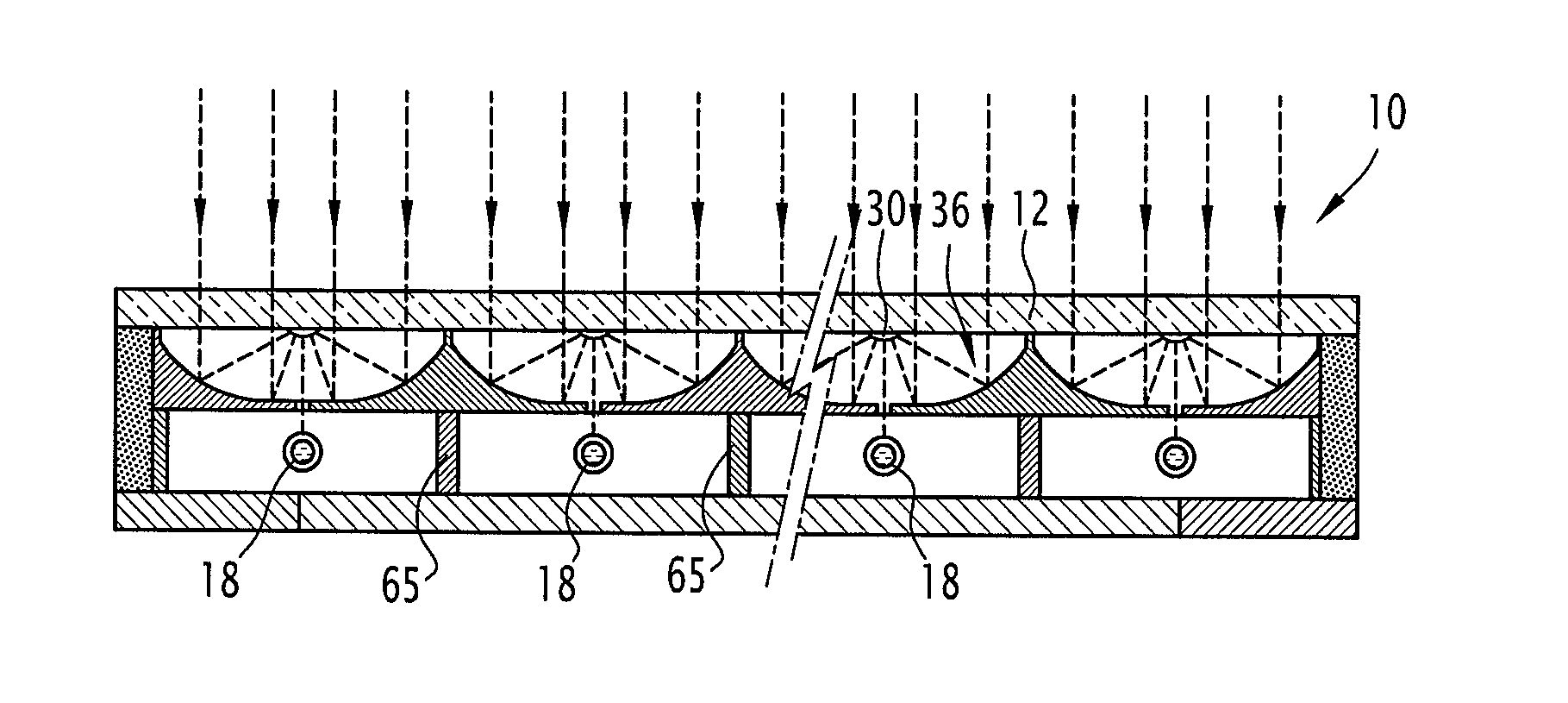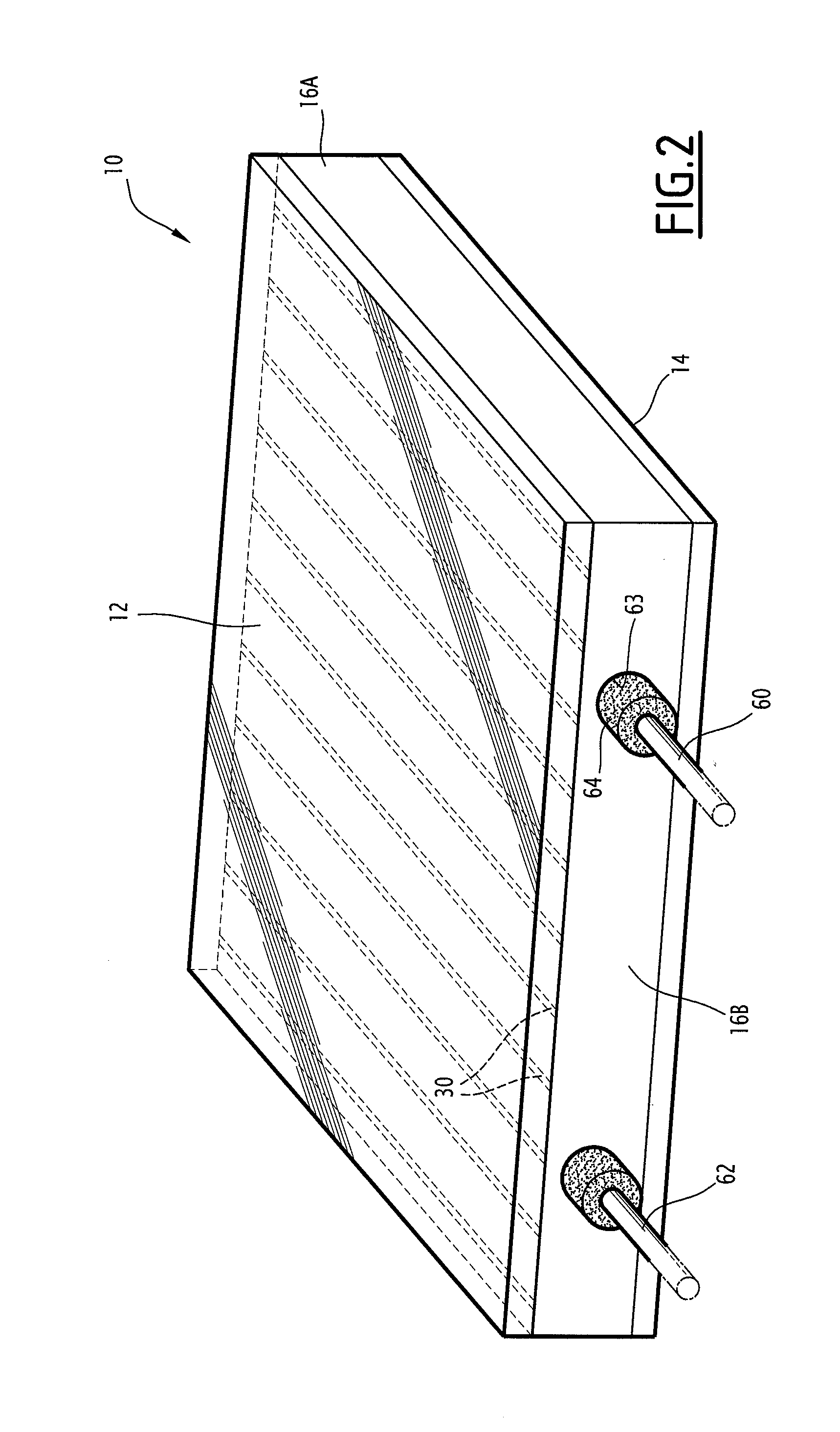High-yield thermal solar panel
a solar panel and high-yield technology, applied in the field of thermal solar panels, can solve the problems of limited thermal performance of such a solar panel and low performance of solar panels at high temperatures, and achieve the effect of satisfying performan
- Summary
- Abstract
- Description
- Claims
- Application Information
AI Technical Summary
Benefits of technology
Problems solved by technology
Method used
Image
Examples
first embodiment
[0053]In accordance with first embodiment described, at least one wall, amongst the lower wall 22, the lateral walls 24, and the upper wall 26, has one such reflective area. Advantageously, each wall 22, 24, and 26 of the housing 20 has such a reflective area, and each of these reflective areas extends over the entire corresponding wall. Thus, almost the entirety of the thermal radiation emitted by the collector 18 is reflected by the walls 22, 24, and 26 of the housing 20, to be re-absorbed by the heat collecting element 18. The thermal losses due to thermal radiation emitted by the collector 18 are thus limited, and the thermal performance of the panel 10 is particularly high.
[0054]For example, each reflective area is formed by a reflective coating, e.g., an aluminium coating, applied to the corresponding wall 22, 24, 26.
[0055]It will be noted that the quality of the reflection by these reflective areas is preserved over time because the inside of the solar panel 10 is a vacuum; t...
second embodiment
[0097]According to this second embodiment, the solar panel 10 includes several heat collecting elements 18, in particular a heat collecting element 18 by a group of primary 36 and secondary mirrors 30.
[0098]Each of these heat collecting elements 18 has a heat transfer function towards a heat storage element arranged, e.g., outside the thermal panel 10, which will be described below by reference to FIG. 10.
[0099]Preferably, the thermal solar panel 10 includes spacers 65, arranged between two adjacent heat collecting elements 18, and extending between the flat base 34 of a reflective element 32 and the lower face 14 of the panel 10, so as to delimit the respective housings for the heat collecting elements. Advantageously, these spacers 65 include a reflective coating.
[0100]An example of a heat collecting element 18 is shown in FIG. 8.
[0101]This heat collecting element 18 is formed by a tubular heat transfer element in which a coolant 66 circulates to ensure heat transfer. Preferably, ...
PUM
 Login to View More
Login to View More Abstract
Description
Claims
Application Information
 Login to View More
Login to View More - R&D
- Intellectual Property
- Life Sciences
- Materials
- Tech Scout
- Unparalleled Data Quality
- Higher Quality Content
- 60% Fewer Hallucinations
Browse by: Latest US Patents, China's latest patents, Technical Efficacy Thesaurus, Application Domain, Technology Topic, Popular Technical Reports.
© 2025 PatSnap. All rights reserved.Legal|Privacy policy|Modern Slavery Act Transparency Statement|Sitemap|About US| Contact US: help@patsnap.com



